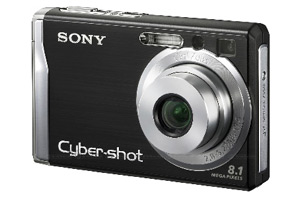FRANKFURT: Digital cameras are classified as compact, superzoom, bridge, system and single-lens reflex models.
Their names may not reveal much, but if you are not aware of what’s behind them, you may end up making a mistake when buying a digital camera.
 Digital cameras are so well established that there are a range of different types on the market. The compact and single-lens reflex (SLR) varieties are the easiest to differentiate. “But all is not as complicated as it appears to be at first glance,” says Constanze Clauss from the representative body of Germany’s photo imaging industry, the Photoindustrie Verband.
Digital cameras are so well established that there are a range of different types on the market. The compact and single-lens reflex (SLR) varieties are the easiest to differentiate. “But all is not as complicated as it appears to be at first glance,” says Constanze Clauss from the representative body of Germany’s photo imaging industry, the Photoindustrie Verband.
Although most compact cameras have a small image sensor, some are capable of zooming up to 15 times closer to the photographed object. The average resolution of a modern compact camera is between 10 and 14 megapixels.
Clauss says the trend at the moment is towards compact cameras equipped with a wide angle lens, a large display and lots of automatic functions. “In general manual functions are the exception to the rule with compact cameras. The depth of field is also very large on a compact.”
Germany’s ‘Computer Bild’ magazine recently compared 12 compact cameras ranging in price from 312 to 436 euros (394 to 550 dollars). According to the magazine, it appears that even the makers of small cameras are equipping their products with quite powerful lenses. That has led to greater zooms and more range when it comes to setting up shots.
Superzoom, or bridge cameras as they are also known, are designed to fill the gap between compact and SLR cameras. They usually come with a 30x zoom, and in contrast to compact cameras, they allow you to alter aperture size or the exposure settings.
Good bridge cameras have an electronic viewfinder. Other useful functions include the option of using a separate flash and the ability to store images in RAW format. Some versions have a manual zoom ring that allows you to make fine adjustments to the focus.
“The quality of the lens is usually a compromise between a very large focal length and a small image sensor,” says Clauss.
Digital system cameras have been on the market for only about two years. Just like an SLR camera you can remove and change the lens on a system camera. Because a system camera has no mirror it is much lighter than a comparable SLR model. The Micro Four Thirds System (MFT) created by Panasonic and Olympus has set the standards for system cameras.
MFT cameras have a live view on their displays. “The image sensor in this type of camera is much larger than in a compact camera,” says Clauss. The sensor is the same size as those found in SLR cameras at 17.3×13 mm and has a resolution of about 12 megapixels.
Germany’s consumer organisation, Stiftung Warentest, conducted a study on system cameras and included a few SLRs for comparison. Of the 25 cameras examined Stiftung Warentest rated 23 as ‘good’ and the other two were ranked as ‘satisfactory.’ However, all of the models took better quality pictures than normal compact cameras.
Single-lens reflex cameras with APS-C sensors are very compact in size but are larger than system cameras with interchangeable lenses. An APS-C sensor is 23x15mm and bigger than that found in a system camera. Thanks to its larger size, the APS-C sensor shows its superiority when photographing bright objects.
“The sensor also gives you a wider spectrum of options to select different areas of focus.”


